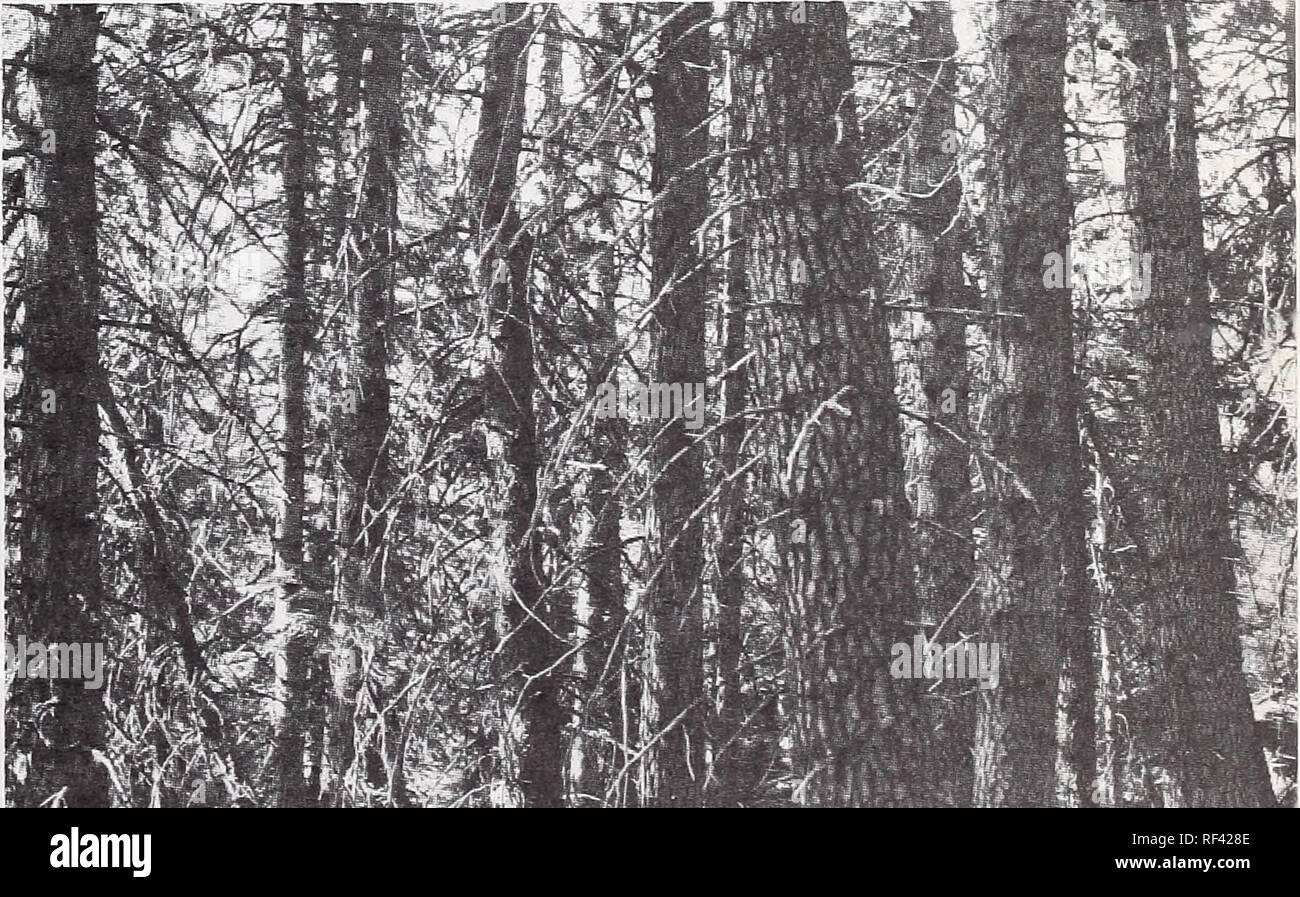. Vegetation of Oregon and Washington. Botany Oregon Ecology; Botany Washington (State) Ecology. ponderosa, P. contorta, Larix occidentalis, and Pseudotsuga menziesii. Any of the four associates listed here may dominate serai for- est stands. Many other species are present in limited numbers or in localized areas such as Picea engelmannii, Abies lasiocarpa, Liboced- rus decurrens, Pinus lambertiana, P. monti- cola, Tsuga mertensiana, and Abies magnifica var. shastensis. Composition of Abies grandis (or A. con- color) associations has been studied in eastern Washington (Daubenmire 1952; Daubenm

Image details
Contributor:
The Book Worm / Alamy Stock PhotoImage ID:
RF428EFile size:
7.1 MB (681.3 KB Compressed download)Releases:
Model - no | Property - noDo I need a release?Dimensions:
2005 x 1246 px | 34 x 21.1 cm | 13.4 x 8.3 inches | 150dpiMore information:
This image is a public domain image, which means either that copyright has expired in the image or the copyright holder has waived their copyright. Alamy charges you a fee for access to the high resolution copy of the image.
This image could have imperfections as it’s either historical or reportage.
. Vegetation of Oregon and Washington. Botany Oregon Ecology; Botany Washington (State) Ecology. ponderosa, P. contorta, Larix occidentalis, and Pseudotsuga menziesii. Any of the four associates listed here may dominate serai for- est stands. Many other species are present in limited numbers or in localized areas such as Picea engelmannii, Abies lasiocarpa, Liboced- rus decurrens, Pinus lambertiana, P. monti- cola, Tsuga mertensiana, and Abies magnifica var. shastensis. Composition of Abies grandis (or A. con- color) associations has been studied in eastern Washington (Daubenmire 1952; Daubenmire and Daubenmire 1968), the central Oregon Cascade Range (Swedberg 1961; Sherman 1969; West 1964), the Ochoco and Blue Mountains (Hall 1967), the Wallowa Moun- tains (Johnson 1959; Head 1959), and south- central Oregon (Dyrness and Youngberg 1966). Most Abies grandis associations can be related to two major groups: (1) Abies grandis/Pachistima myrsinites and Abies grandis/Vaccinium membranaceum21 (Dau- benmire 1952; Daubenmire and Daubenmire 1968; Head 1959; Swedberg 1961; Hall 1967) and (2) the Abies grandis/Calamagrostis rubes- cens (Hall 1967; Johnson 1959). The Abies grandis/Pachistima myrsinites and /Vaccinium membranaceum associations have well-developed herbaceous understories. Characteristic species include: Shrubs — Rosa gymnocarpa, Pachistima myrsinites, Ribes lacustre; and Herbs — Bromus vulgaris, Galium triflorum, Smilacina stellata, Thalictrum occidentale, Arnica cordifolia, Mitella stauropetala, Arenaria macrophylla, Hieracium albiflo- rum, Linnaea borealis, Adenocaulon bi- color, Anemone piperi, A. lyallii, Viola gla- bella, Trillium ovatum, Clintonia uniflora, Asarum caudatum, Lupinus latifolius, and Rubus lasiococcus. Under very dense canopies, a group of scio- phytes forms a sparse understory (fig. 112) 21F. C. Hall (personal communication) has described three related Abies grandis associations in the Blue Mountains province to which we have referred by